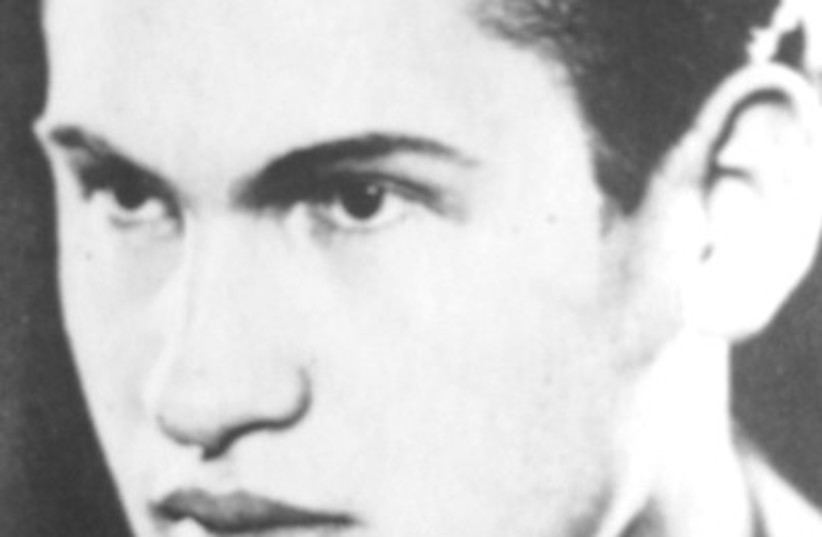The approaching Hanukkah holiday symbolizes the victory of the few over the many, and the ability of the people of Israel to overcome their enemies, even when it seems impossible.
On March 19, 1944, the Germans invaded Hungary and within seven weeks implemented the “Final Solution” for Hungarian Jewry. About 450,000 Jews from the periphery were sent in 147 trains to be exterminated at Auschwitz. It was already toward the end of the war, when it was clear that the Germans were on the way to defeat. But the Germans still sent Adolf Eichmann to carry out their diabolical plot.
With the German invasion of Hungary, members of the Zionist Youth Movements went underground. They decided consciously not to take up arms but to act quietly and wisely to save Hungarian Jewry.
They knew at the time that the defeat of the German Army was near but they faced many challenges, such as a lack of men, who were mostly recruited for forced labor. The topographical conditions were also against them. In Hungary, there are no forests and no swamps where you can find a hiding place.
The Hungarian population, which was mostly fascist, collaborated with the Nazis and was very hostile to the Jews. But mostly they were saddened by the news that as of those days “there were no Jews left Europe anymore.”
Therefore, they decided to “fight for life.”

In one of his testimonies, my father, Moshe (Pil) Alpan, one of the underground leaders of the Zionist Youth Resistance Movements in Hungary, said, “To fight for Jewish honor in 1944 was madness. We decided to fight for life, for the Jewish people!”
The underground people acted boldly, quietly and wisely. At first they went underground, and with the help of papers they prepared in a workshop they set up in advance, they managed to disguise themselves as gentiles in the big city, Budapest, where about a million people lived at the time, and went out to rescue.
They acted with extraordinary resourcefulness, and discovered a responsibility that cannot be surpassed, and acted with pure altruism. They could have saved themselves but chose to stay “in the mousetrap we fell into” and try to save as many as possible while risking their lives daily.
It was the largest organized rescue operation in the history of the Holocaust. Without firing a single shot, they saved more than 45,000 Hungarian Jews.
When they arrived in Israel after the war, they wanted only one thing: to start a family and build their country. They were almost totally unconcerned with documenting their actions or registering them in the public consciousness.
IN THE RENEWED Land of Israel, the leadership sought to create a myth of heroism for the Israeli “soldier.” Their actions there in 1944, in their view, did not reflect this ethos. The myth of the rebellion and the fight for Jewish honor revolved around the armed struggle, such as the Warsaw Ghetto Uprising, and not around rescue (methods belonging to the intelligence community).
Unfortunately, my father and his friends in the underground did not succeed to explain and pass on their legacy and commemorate their actions in Hungary in those days of chaos and terror toward the end of the war. We must change this situation and make it so that their deeds, immortalized in sand and wind, will leave their inscription in stone and that historic justice will be done to them.
Recognizing those who came to the rescue for Jews
On December 13, there will be a ceremony to award the “Jewish Rescuer Citation” to more than 200 members of the Zionist Youth Resistance Movement in Hungary. This is in addition to the 127 men and women who have already received the badge in the past. The ceremony will be attended by relatives of those heroes, in addition to the few survivors who are still with us. They will receive certificates and recognition for their actions and the actions of their relatives.
The young men and women who worked to save our people can easily be considered like members of the Mossad of that time, and they should be an example and role model to the State of Israel, which today recognizes the supreme value of the rescue and the importance of secret intelligence operations.
The commander of the Pier Post in the Yom Kippur War had to decide whether to fight the Egyptians, without any chance, to fight for honor or go into captivity and thus save his men. He chose to save his soldiers. Today, we better understand his difficult and correct decision.
The leadership of the Zionist Youth Resistance Movements in Hungary understood the value of the rescue then and acted to save as many Jews as possible. Like the leaders of the Hasmoneans in the days of Hanukkah, they operated without any outside help in a particularly hostile population, under a regime of terror with tremendous power.
They smuggled thousands of young men and women across the border to Romania, established “children’s homes” and thus saved some 5,000 children and another 1,000 staff members, all under a murderous regime of the “Arrow Cross.”
Toward the end of the war, while the allied bombings from the air and shelling destroyed the capital, they took care and supplied food to the ghettos, the children’s homes and those hiding in the “Glass House.” They printed and distributed “Schutzpass” certificates (patronage certificates) similar to the original certificates issued by Carl Lutz, the Swiss sub-consul, to the Jews who remained in Budapest, thus saving thousands.
At this time, in preparation for International Holocaust Remembrance Day, we must recognize and cherish their actions, which serve as an example and model for Jewish heroism and salvation, and for determined, courageous action full of sacrifice and resourcefulness.
